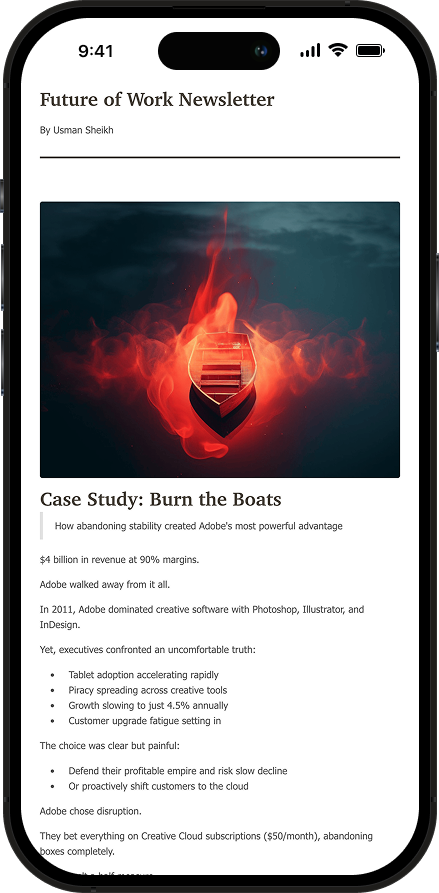19 Apr 2025
The Pain-Threshold Curve
Why silenced pain always finds its voice
Every revolution in history began with pain.
Empty stomachs in Paris 1789. Empty looms in Nottingham 1811. Empty bank accounts in Weimar 1923.
Before revolution, comes denial.
It always starts the same way: numbing every discomfort.
But the pain isn't gone. It's compounding in silence.
The resistance always sounds the same: "But can't we grow without pain?"
Growth, like our muscles, requires us to tear them first.
Systems absorb suffering until they can't:
→ Comfort Zone: Pain contained, ignored, numbed
→ Rising Tension: Pressure builds beneath the surface
→ Snap Point: Overnight revolutions when thresholds break
We are seeing this pattern everywhere:
→ Work is being fundamentally restructured by AI
→ Trust in institutions continues its free fall
→ Economic mobility stagnates for most people
→ Governance models crumble under their own weight
This pattern isn't just about systems and institutions.
Your body, your career, your relationships, all follow the same curve.
Pain isn't just a warning. It's how truth enters the world.
→ Without pain, art becomes decoration
→ Without pain, relationships become transactions
→ Without pain, businesses become spreadsheets
→ Without pain, society becomes numb
The most transformative moments in human history weren't comfortable evolutions.
They were revolutions that broke through when the suppressants stopped working.
The next wave of revolutions will come in the spaces we've most successfully anesthetized.
→ Our education system
→ Our monetary order
→ Our employment model
The most dangerous words in any organization: "This discomfort is temporary."
Pain isn't the problem to solve. It's the truth trying to emerge.
The leaders who thrive won't be those who avoid pain.
They'll be those who feel it early, understand what it's telling them, and transform before the snap point arrives.
Revolutions destroy those who numb themselves to reality. They elevate those who embrace painful truths and act on them first.
